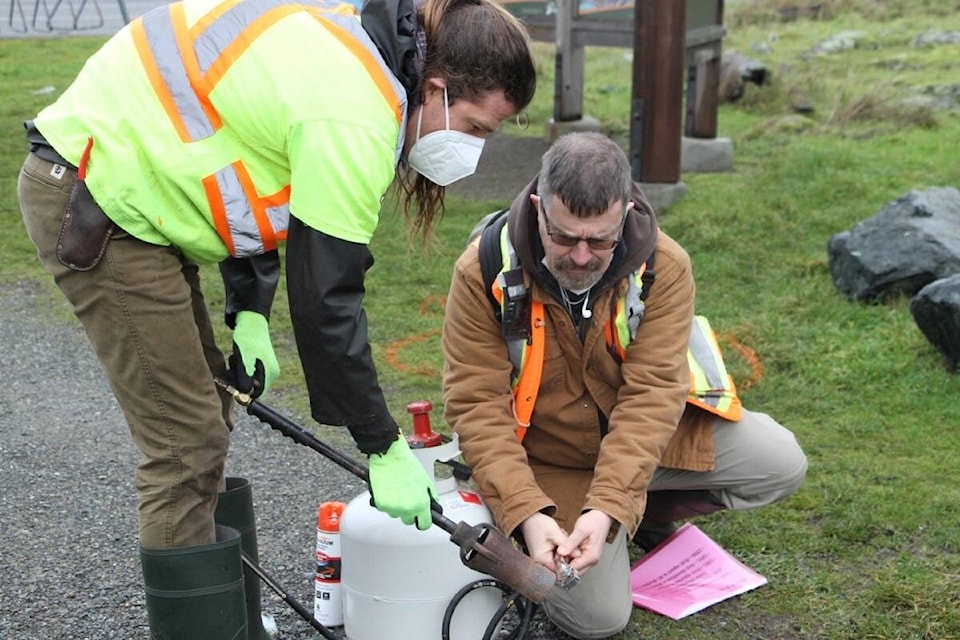While torching carpet burweed is an old hat for Wylie Thomas to wear, leading a session for parks managers from as far north as Nanaimo is a bit new.
The conservation biologist who manages the federally funded Habitat Restoration Stewardship project at Uplands Park led a session where parks crews shared how they deal with the invasive plant.
Oak Bay volunteers and parks staff treat carpet burweed every year through several burning sessions in October, January and April.
“Many managers are worried about the spread of the weed in their parks. We held a face-to-face session in the fall and this is the follow up to show others how we’ve been managing the infestation in Oak Bay and share tips on how to identify it in the field,” Thomas said.
READ ALSO: Damage unleashed on sensitive Oak Bay park as dog popularity rises
Carpet burweed (soliva sessilis) is an invasive plant threatening to suffocate the already at-risk species endemic to the rare maritime ecosystem of Cattle Point and the rest of Uplands Park. It spreads easily to new areas by attaching its seeds to the skin, shoes and paws of park-goers and their dogs.
Carpet burweed was first found in Canada in 1996 at Ruckle Provincial Park on Salt Spring Island, where it now encompasses an area of many thousand square metres, Thomas said. By 2005, it had spread to parks in Greater Victoria including Cattle Point, Beacon Hill Park and Jordan River Regional Park.
Oak Bay fenced off an area and let the grasses grow up to drown it out but the burweed had already hopped the fence. By 2012 it was abundant.
There are two concerns for Oak Bay, Thomas said. First is the potential for the prickly weed to spread to boulevards, public spaces and lawns. More importantly, it has a negative impact on special and rare meadows of Uplands Park, particularly the seaside portion as burweed has a preference for the same habitat as many of Cattle Point’s rare species.
READ ALSO: Drivers damage popular Oak Bay parks doing doughnuts in saturated soil
The Jan. 13 session included Oak Bay, Victoria, Nanaimo and Parks Canada people sharing experiences dealing with the noxious weed – and learning in the process. Thomas went over identification and how it quickly spread at Cattle Point in Uplands Park, alongside measures meant to halt the spread.
Torches are effective because the plant has shallow roots and the flame also burns viable seeds. In the Oak Bay park, it’s limited to areas away from the maritime meadows, which are home to rare plants. There, plants are pulled by hand or grass is left to grow high around it in a bid for eradication.
READ ALSO: Oak Bay torching invasive burweed at Cattle Point
Do you have a story tip? Email: c.vanreeuwyk@blackpress.ca.
Follow us on Twitter and Instagram, and like us on Facebook.
